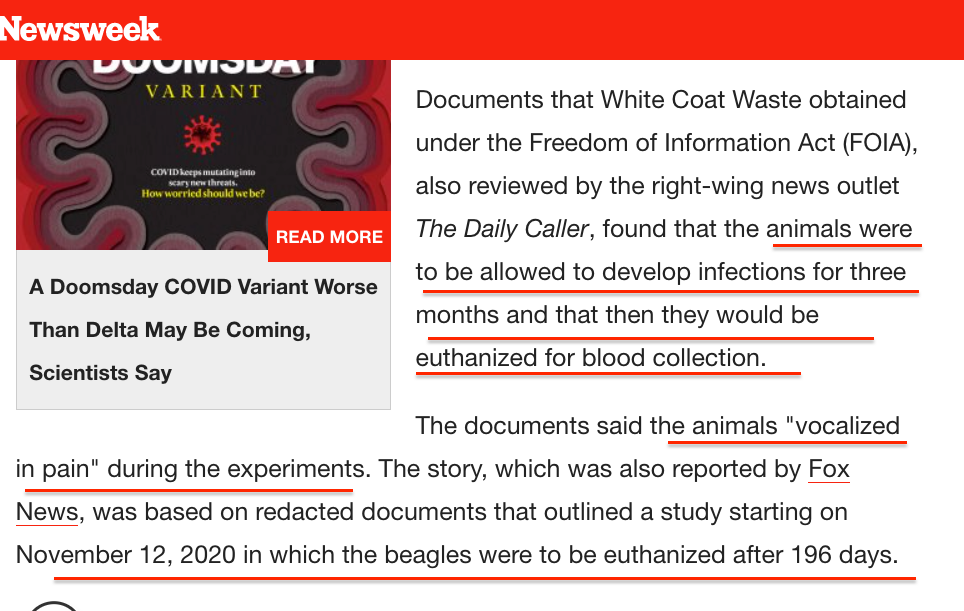
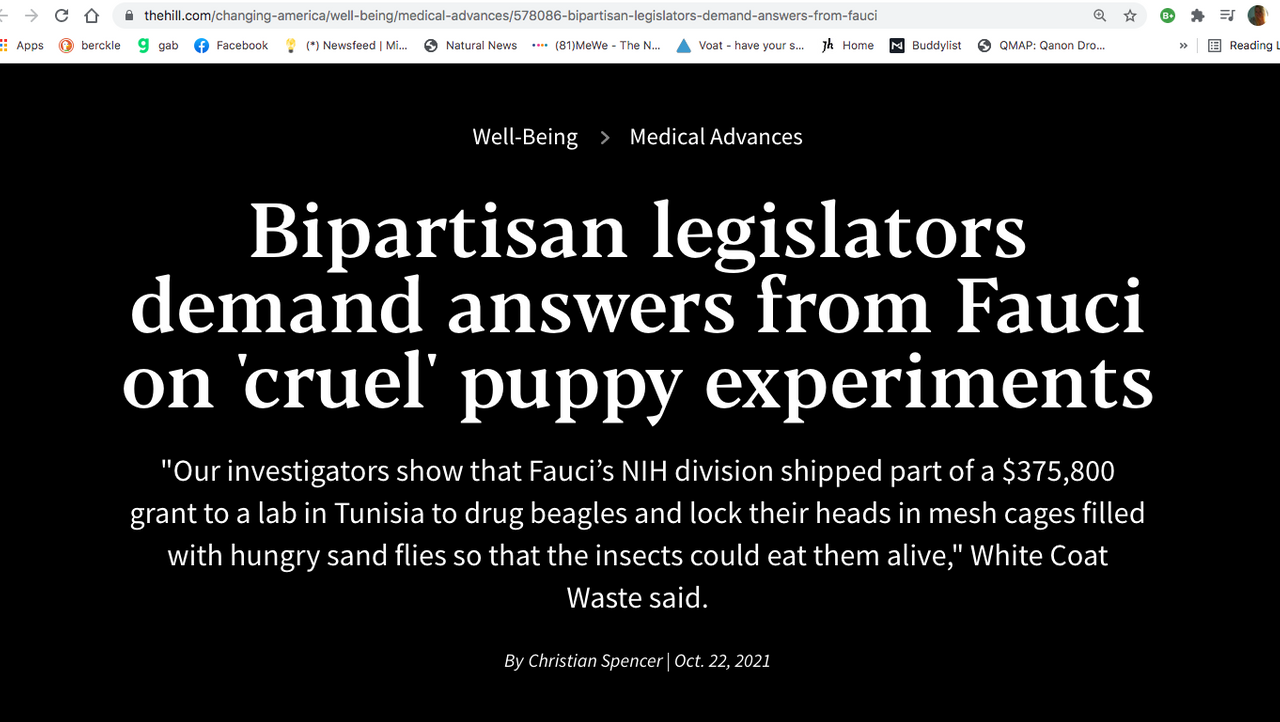
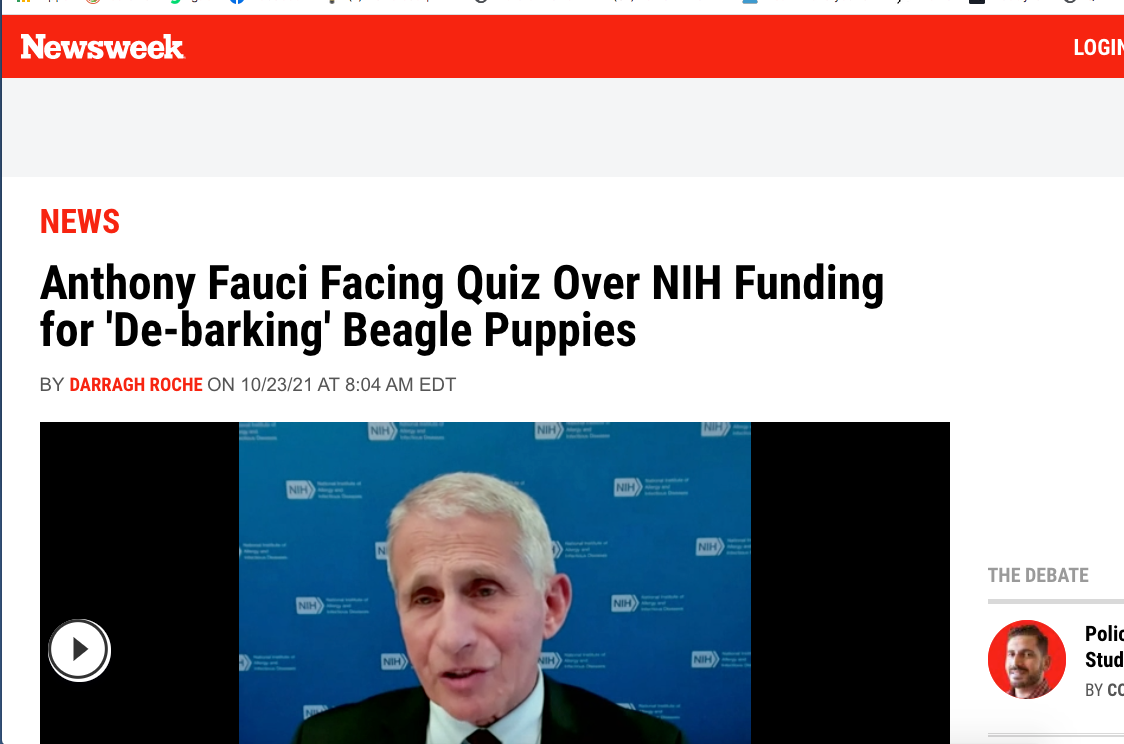
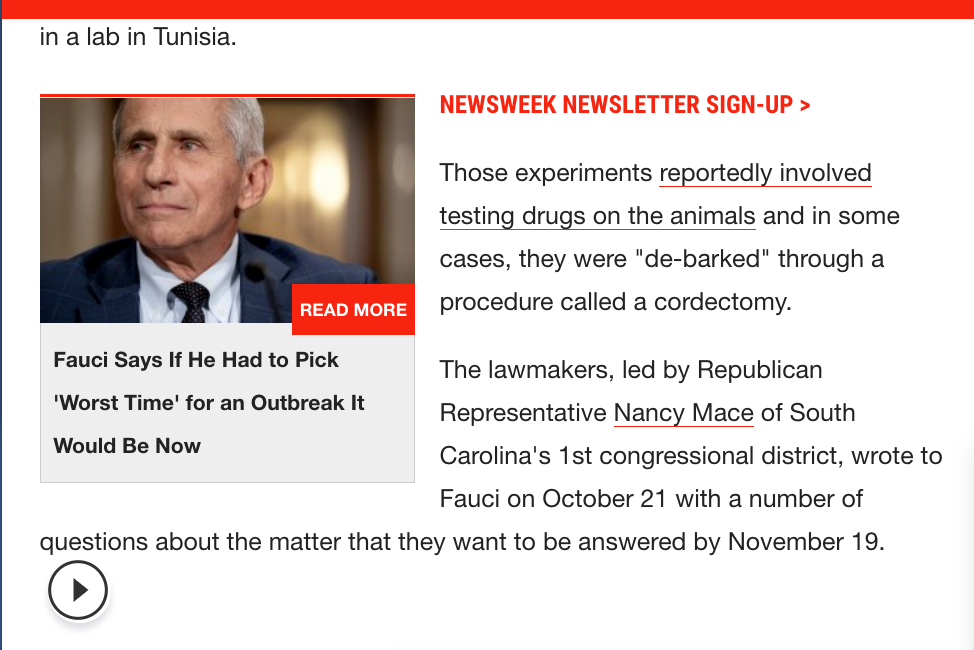
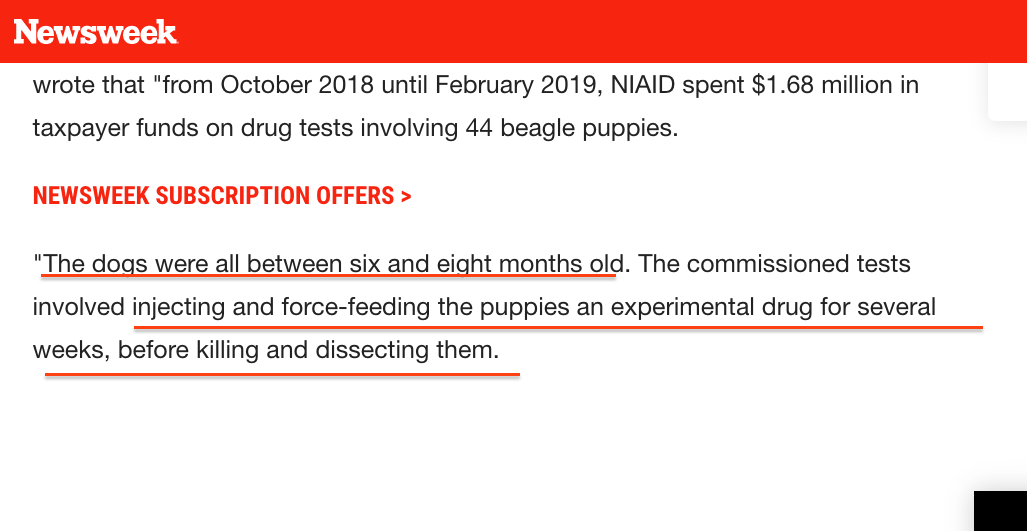
Also find in this article. . .
- the history of a doctor who gave evidence of the placebo effect, showing how powerful the human mind is in creating change and healing.
Written in the New York Times back in 1998 so not from what belittlers try to claim is "fringe conspiracy theory!"
- More evidence of cruel treatment to animals in the name of cruel people's definition of "science." [It's not the science that is bad, it's Who is behind it. Just as is the case with technology and other developments, applications, techniques]
- How a doctor with many awards and accolades stood up against inhuman research and experimentation.
- Evidence of beagles and other animals being abused through research funded by taxpayer dollars. [The abuse is bad enough, but make no mistake, it is being done in your name.]
- Doctors in Texas [reported in 1998] conducted a study of arthroscopic knee surgery that used general anesthesia in which patients with sore, worn knees were assigned to one of three operations -- scraping out the knee joint, washing out the joint or doing nothing.
Two years after surgery, patients who underwent the sham surgery reported the same amount of relief from pain and swelling as those who had had the real operations.
- A recent review of placebo-controlled studies of modern antidepressant drugs found that placebos and genuine drugs worked about as well.
''If you expect to get better, you will,'' said Dr. Irving Kirsch, a psychiatrist at the University of Connecticut who carried out the review. His findings were met with a great deal of skepticism. [Do you suppose it was those whose pockets are padded with the profits from Big Pharma and their ardent, sadly addicted followers and supporters?]. Just a thought, but you decide!
- Research from Wired and other groups that show the dendrites are more than wiring, they can function as mini computers.
See access to a Allen Brain Atlas Data Portal
The database contains electrophysiological, morphological, and transcriptomic data measured from individual cells, as well as models simulating cell activity. Thus far, data generation has focused on select areas of cerebral cortex, and thalamic neurons.
Browse electrophysiological response data and reconstructed neuronal morphologies using the Cell Feature Search tool. Single cell gene expression data is described on the RNA-Seq Data page.
Lets continue with what most hate dealing with as none of us like to think about such heinous abuses to animals, but if this is going on right under our noses, shouldn't we desire to put a definite and immediate Stop to it?
Are we not the keepers of the animals and those without a voice?
Proverbs 31:8-9
8 Open thy mouth for the dumb in the cause of all such as are appointed to destruction.
9 Open thy mouth, judge righteously, and plead the cause of the poor and needy.

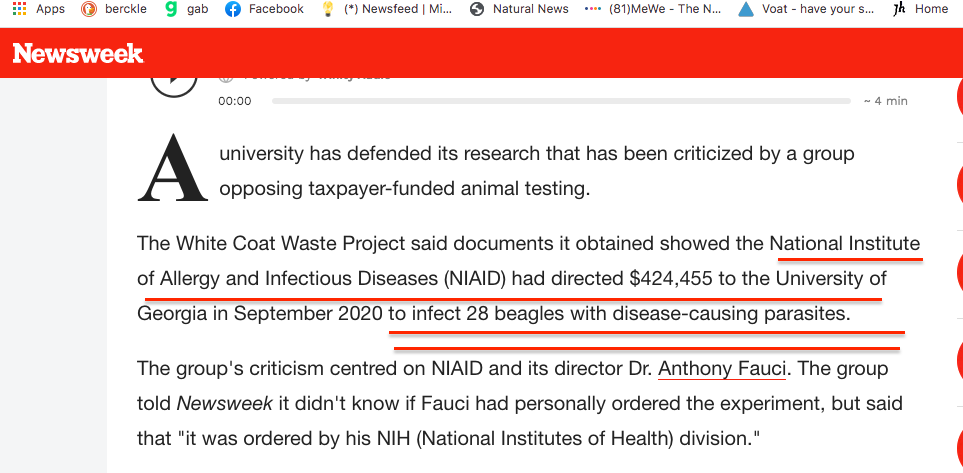
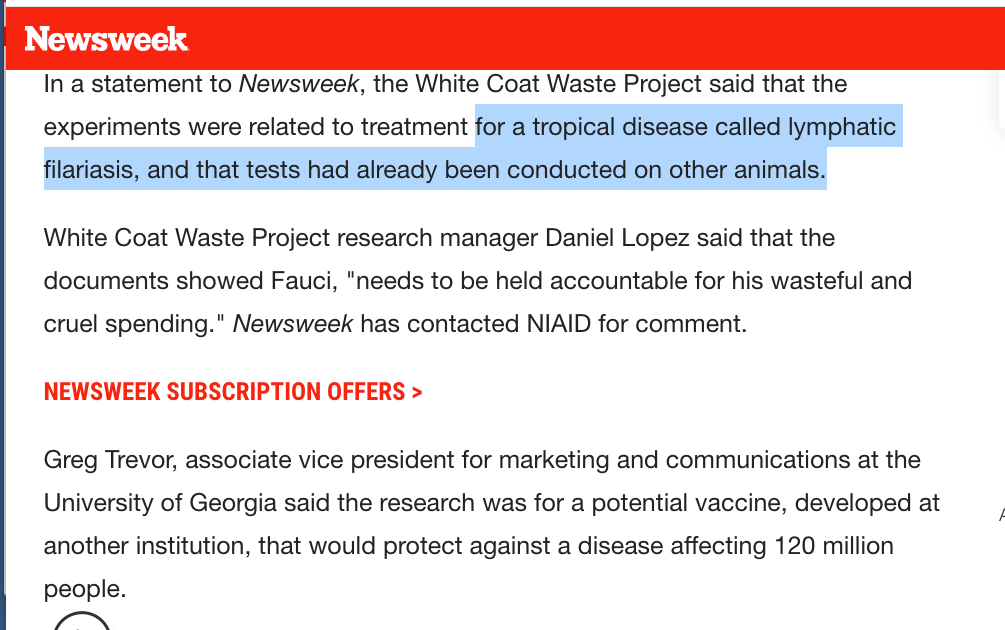


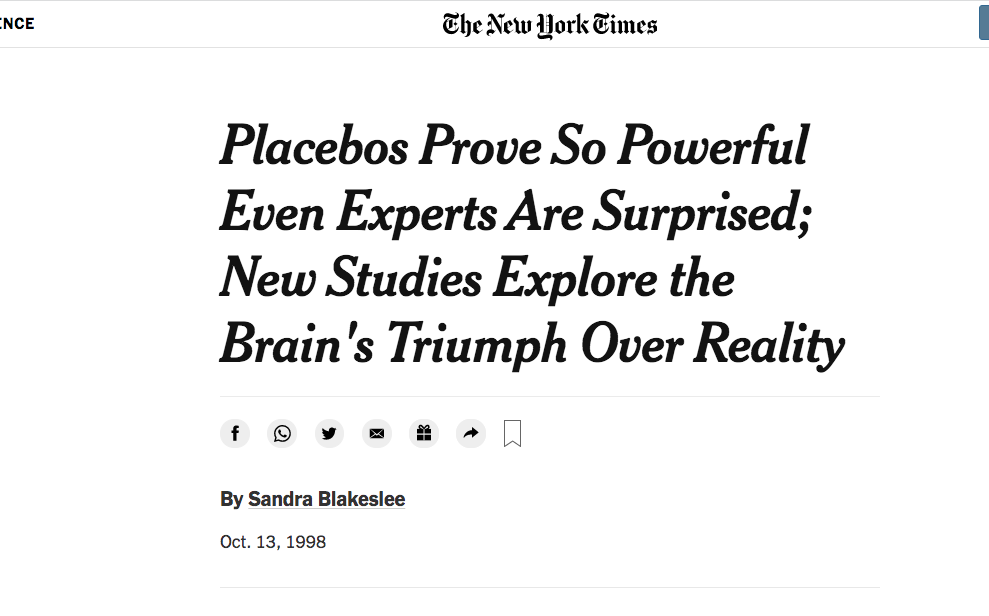
Many doctors know the story of ''Mr. Wright,'' who was found to have cancer and in 1957 was given only days to live. Hospitalized in Long Beach, Calif., with tumors the size of oranges, he heard that scientists had discovered a horse serum, Krebiozen, that appeared to be effective against cancer. He begged to receive it.
His physician, Dr. Philip West, finally agreed and gave Mr. Wright an injection on a Friday afternoon. The following Monday, the astonished doctor found his patient out of his ''death bed,'' joking with the nurses. The tumors, the doctor wrote later, ''had melted like snowballs on a hot stove.''
Two months later, Mr. Wright read medical reports that the horse serum was a quack remedy. He suffered an immediate relapse. ''Don't believe what you read in the papers,'' the doctor told Mr. Wright. Then he injected him with what he said was ''a new super-refined double strength'' version of the drug. Actually, it was water, but again, the tumor masses melted.
Mr. Wright was ''the picture of health'' for another two months -- until he read a definitive report stating that Krebiozen was worthless. He died two days later.
Doctors who know this story dismiss it as one of those strange tales that medicine cannot explain. The idea that a patient's beliefs can make a fatal disease go away is too bizarre.
But now scientists, as they learn that the placebo effect is even more powerful than anyone had been able to demonstrate, are also beginning to
- discover the biological mechanisms that cause it to achieve results that border on the miraculous.
- Using new techniques of brain imagery, they are uncovering a host of biological mechanisms that can turn a thought, belief or desire into an agent of change in cells, tissues and organs.
- They are learning that much of human perception is based not on information flowing into the brain from the outside world but what the brain, based on previous experience, expects to happen next.
Until fairly recently, nearly all of medicine was based on placebo effects, because doctors had little effective medicine to offer. Through the 1940's, American doctors handed out sugar pills in various shapes and colors in a deliberate attempt to induce placebo responses.
Doctors in Texas are conducting a study of arthroscopic knee surgery that uses general anesthesia in which patients with sore, worn knees are assigned to one of three operations -- scraping out the knee joint, washing out the joint or doing nothing. In the ''nothing'' operation, doctors anesthetize the patient, make three little cuts in the knee as if to insert the usual instruments and then pretend to operate. Two years after surgery, patients who underwent the sham surgery reported the same amount of relief from pain and swelling as those who had had the real operations.

https://www.txortho.com/expert-response-on-recent-placebo-study/
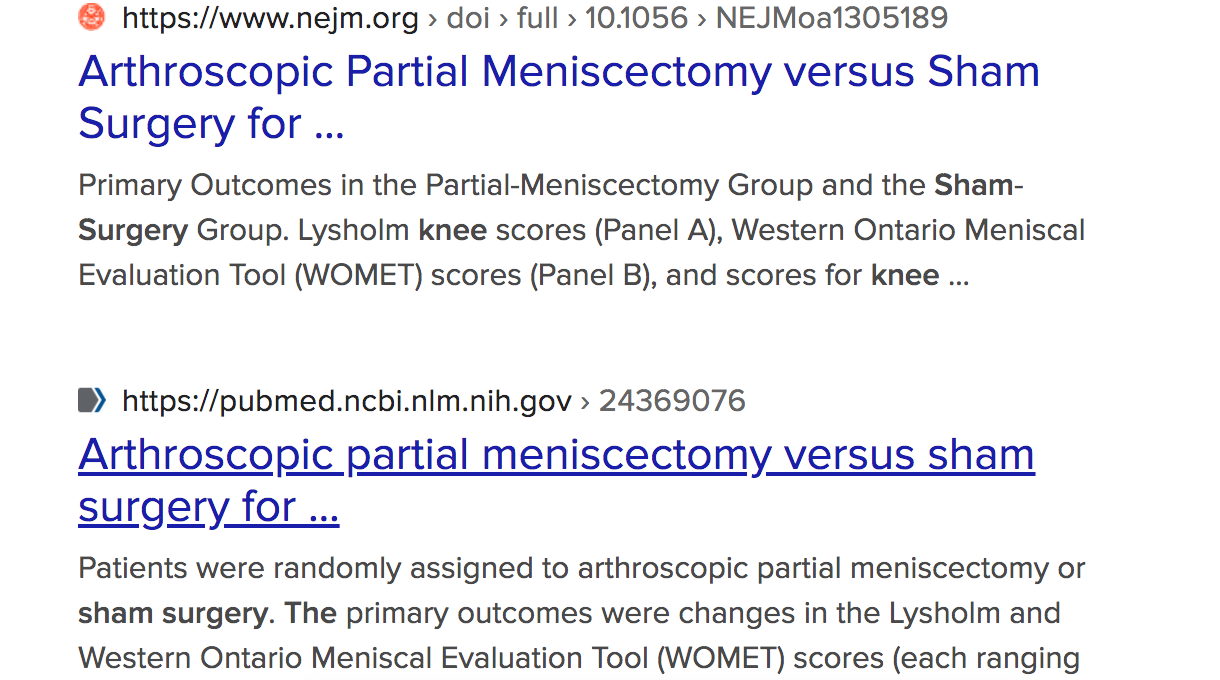
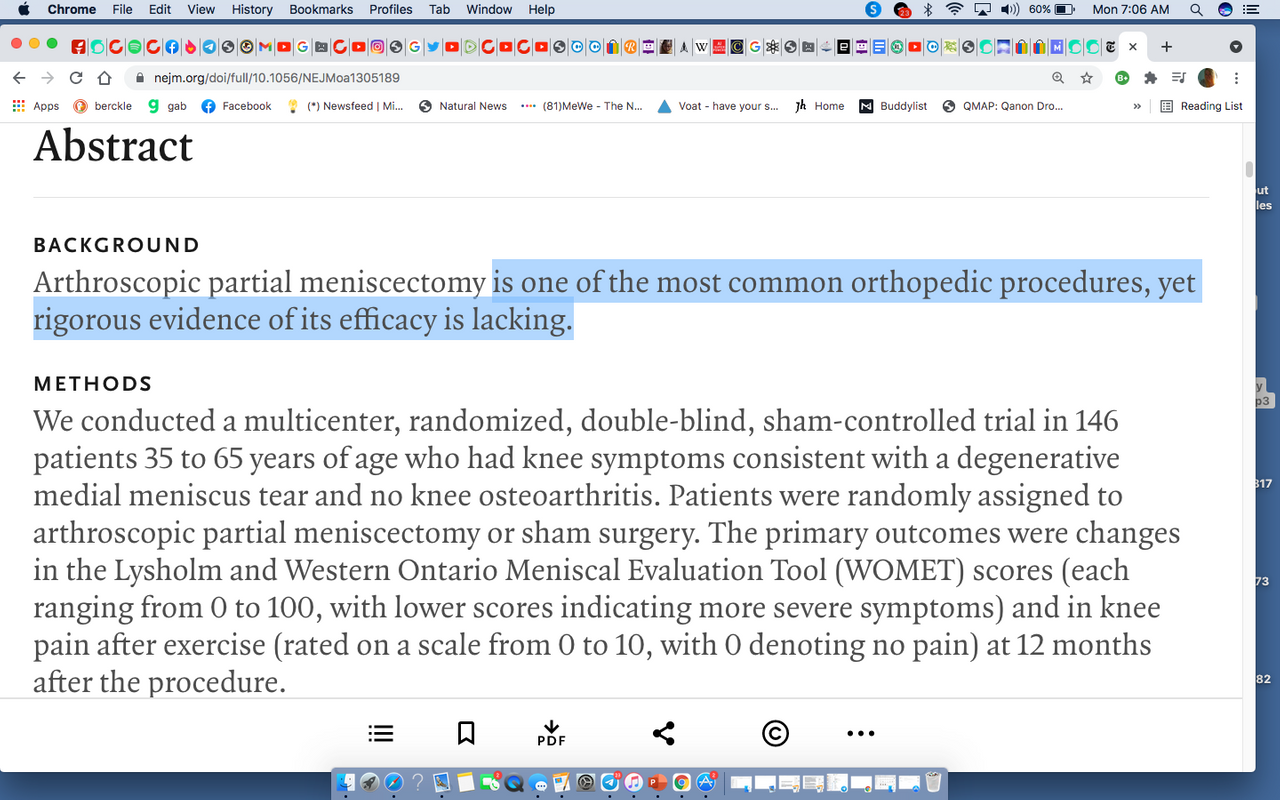
https://www.nejm.org/doi/full/10.1056/NEJMoa1305189
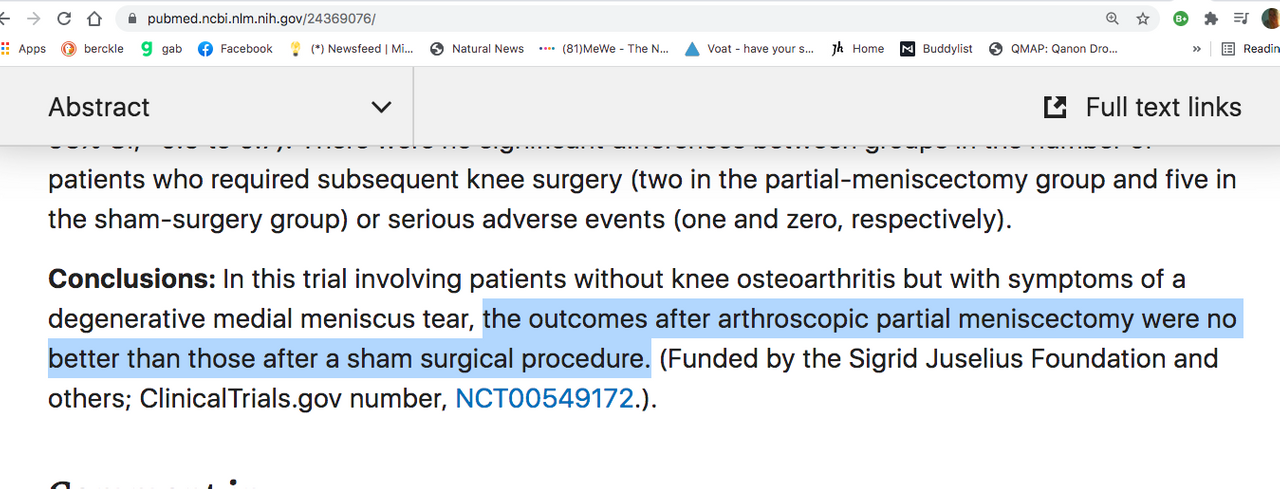
https://pubmed.ncbi.nlm.nih.gov/24369076/
Please bear in mind, this placebo article was written in the New York Times back in 1998; therefore, those who try to claim it's "Conspiracy Theory," just because they don't want to deal with the information, will have to then assume mainstream media consistently deals in "Conspiracy Theory."
Is it only a theory?
Has it been proven to have merit?
Is there a conspiracy afoot and who is always actually kept in the dark?
Those are the questions humanity should be asking. Are they asking them, or are some choosing to use the idea that anything Testing the approved Narrative has a negative connotation?
Who put the idea of that negative connotation forefront in people's minds so they would feel justified in Not answering the needling, nagging questions?
Who attempted to leave people in the dark or "dumb them down?"
Now who actually Allowed it?
Is anyone really Forced Not to think for themselves?
Or are people Willingly giving their power over for the drama and chaos of pushed fear?
You decide!
Back to the New York Times article titled once again,
Placebos Prove So Powerful Even Experts Are Surprised; New Studies Explore the Brain's Triumph Over Reality
A recent review of placebo-controlled studies of modern antidepressant drugs found that placebos and genuine drugs worked about as well.
''If you expect to get better, you will,'' said Dr. Irving Kirsch, a psychiatrist at the University of Connecticut who carried out the review. His findings were met with a great deal of skepticism.
Why do you suppose that was? Can big pharma and investors make money off of expectations, beliefs and people using their own power to heal themselves? How can this profit elitists and pad the pockets of controllers?
And a recent study of a baldness remedy found that 86 percent of men taking it either maintained or showed an increase in the amount of hair on their heads. But so did 42 percent of the men taking a placebo.
Some studies are specifically designed to explore the power of placebos rather than drugs. On Coche Island in Venezuela, asthmatic children were given a sniff of vanilla along with a squirt of medicine from a bronchodilator twice a day. Later, the vanilla odor alone increased their lung function, 33 percent as much as did the bronchodilator alone.
For a while, many scientists thought that placebos might work by releasing the body's natural morphine-like substances, called endorphins. But that is not the only explanation, he said. While placebos can act globally on the body, they can also have extremely specific effects. For example, a study was carried out in Japan on 13 people who were extremely allergic to poison ivy. Each was rubbed on one arm with a harmless leaf but were told it was poison ivy and touched on the other arm with poison ivy and told it was harmless. All 13 broke out in rash where the harmless leaf contacted their skin. Only two reacted to the poison leaves.
Studies have shown, time and again, that placebos can work wonders. Like ''real drugs,'' they can cause side effects like itching, diarrhea and nausea. They can lead to changes in pulse rate, blood pressure, electrical skin resistance, gastric function and skin conditions.
The question is, why? Explanations of why placebos work can be found in a new field of cognitive neuropsychology called expectancy theory -- what the brain believes about the immediate future.
Like classical conditioning theory (Pavlov's dogs salivate at the sound of the bell), expectancy involves associative learning. The medical treatments you get during your life are conditioning trials, Dr. Kirsch said. The doctor's white coat, nurse's voice, smell of disinfectant or needle prick have acquired meaning through previous learning, producing an expectation of relief from symptoms. Each pill, capsule or injection is paired with active ingredients, and later, if you get a pill without active ingredients, you can still get a therapeutic effect, he said.
Such conditioning shows how expectations are acquired, Dr. Kirsch said. But it does not explain the strength and persistence of placebo effects. These responses occur almost instantly, with no apparent conscious thought, and are therefore wired firmly into the brain, he said.
Support for the expectancy theory emerged about 10 years ago, when many scientists realized how closely the brain, the immune system and the hormone production of the endocrine system are linked. Chronic stress sets into motion a cascade of biological events involving scores of chemicals in the body -- serotonin, cortisol, cytokines, interleukins, tumor necrosis factor and so on.
Such stress lowers resistance to disease and alters gene expression.
When people are under stress, wounds tend to heal more slowly, latent viruses like herpes erupt and brain cells involved in memory formation die off. The precise molecular steps underlying all of these changes have been mapped out.
This is why Fear is destructive, yet it has been pushed in our society for some time?
Why all the fear mongering?
Who does it profit if people are sick, depressed, anxious?
What do many turn to for a solution?
But what about the opposite? Can a thought or belief produce a chemical cascade that leads to healing and wellness? Researchers studying placebos think the answer is yes, and they offer several ways it might work:
*A placebo might reduce stress, allowing the body to regain some natural, optimum level called health.
*Special molecules may exist that help carry out placebo responses. For example, a recent study found that stressed animals can produce a valium-like substance in their brains, but only if they have some control over the source of the stress. People almost certainly have similar brain chemistry.
*Placebos may draw their power from the way the brain is organized to act on what experience predicts will happen next.
Dr. Marcel Kinsbourne, a neuroscientist at the New School for Social Research in New York, explains it this way:
The brain generates two kinds of activation patterns, which arise from networks of neurons firing together.
- One type is set in motion by information flowing into the brain from the outside world -- smells, tastes, visual images, sounds.
** At the same time, the cortex draws on memories and feelings to generate patterns of brain activity related to what is expected to happen.
The top-down patterns generated by the cortex intersect smoothly with the bottom-up patterns to inform us about what is happening, Dr. Kinsbourne said. If there is a mismatch, the brain tries to sort it out, without necessarily designating one set of patterns as more authoritative than another.
The expectations that result are internally generated brain states that can be as real as anything resulting purely from the outside world. For example, recent experiments with monkeys show that if they expect a reward like a sip of apple juice, cells in their brains fire 20 to 30 seconds before they actually receive it. In other words, expectancies are embedded in the brain's neurochemistry.
''We are misled by dualism or the idea that mind and body are separate,'' said Dr. Howard Fields, a neuroscientist at the University of California at San Francisco who studies placebo effects. A thought is a set of neurons firing which, through complex brain wiring, can activate emotional centers, pain pathways, memories, the autonomic nervous system and other parts of the nervous system involved in producing physical sensations, he said.
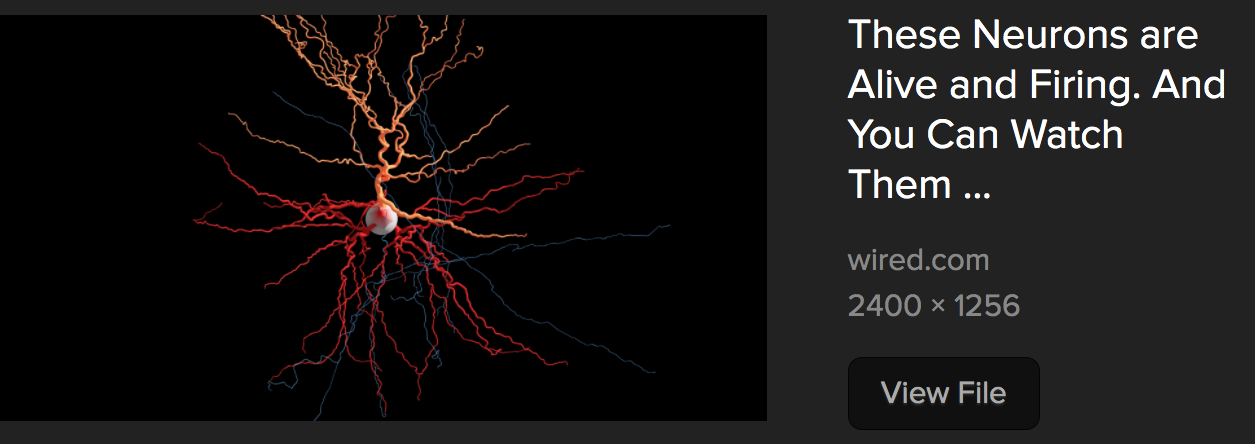

https://www.wired.com/story/live-neurons-help-scientists-build-better-maps-of-the-brain/
From the Allen Brain Atlas Data Portal
The database contains electrophysiological, morphological, and transcriptomic data measured from individual cells, as well as models simulating cell activity. Thus far, data generation has focused on select areas of cerebral cortex, and thalamic neurons.
Browse electrophysiological response data and reconstructed neuronal morphologies using the Cell Feature Search tool. Single cell gene expression data is described on the RNA-Seq Data page.
Use the Allen Software Development Kit (SDK) to programmatically access and analyze raw data, and to run models.
Data can be downloaded by selecting individual experiments in the Cell Feature Search tool, by accessing transcriptomic RNA-Seq files, or through the Allen SDK or API.
Single Cells from Human Brain
Cells are acquired from donated ex vivo brain tissue dissected from temporal or frontal lobes, based on anatomical annotations described in The Allen Human Brain Reference Atlas. For electrophysiological and morphological analyses in the cortex, cells are selected based on soma shape and laminar location.
For transcriptomic analysis, individual layers of cortex are dissected, and neuronal nuclei are isolated. Laminar sampling is guided by the relative number of neurons present in each layer.
There are also adult mice cells used.
Cells are identified for isolation using transgenic mouse lines harboring fluorescent reporters, with drivers that allow enrichment for cell classes based on marker genes. For electrophysiological and morphological analyses, excitatory cells with layer-enriched distribution and inhibitory cells expressing canonical markers were isolated. Brain areas selected for analysis include subregions from visual cortex, motor cortex and anterior lateral motor cortex (ALM), in the secondary motor area (MOs). Subregions from visual cortex (secondary visual areas) are also included.
Find out more here on donor profiles,
http://celltypes.brain-map.org/
This first release includes electrical readings from a few hundred living neurons—all recently removed from 36 neurosurgery patients in Seattle area hospitals. For 100 of those cells, Allen Institute researchers built 3-D models of their branching structures, which they can use to simulate patterns of pulses and zaps. Scientists can see where in the brain neurons start and stop, and how current flows and spreads a signal throughout a neuronal network—signals that might move a muscle, or make a memory.
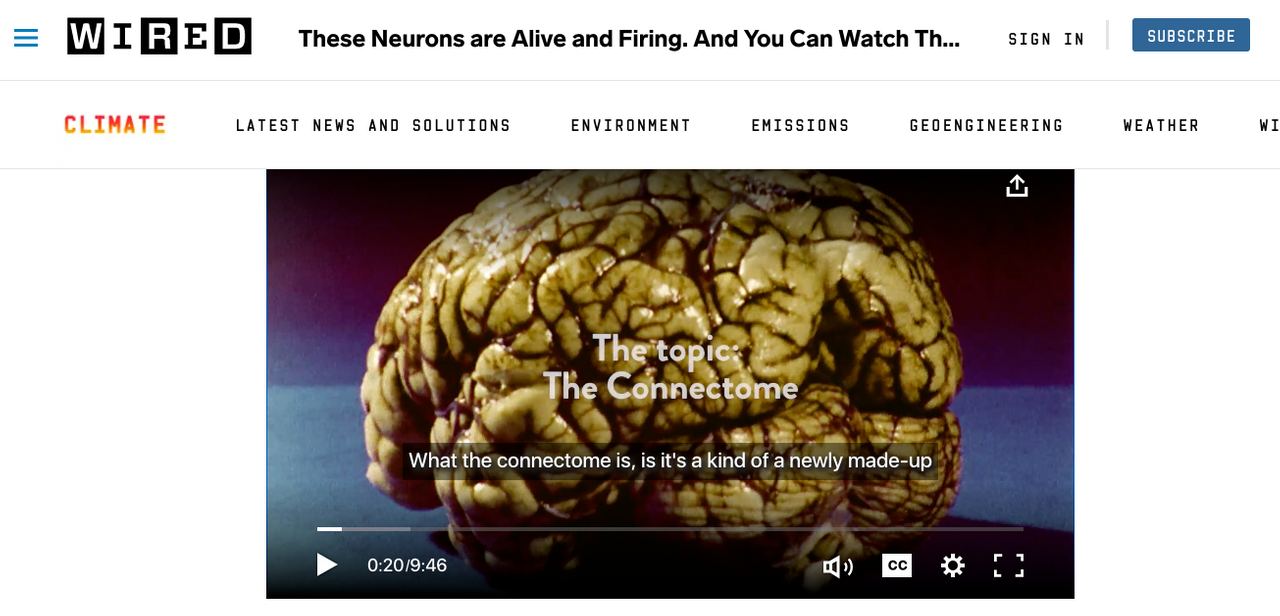
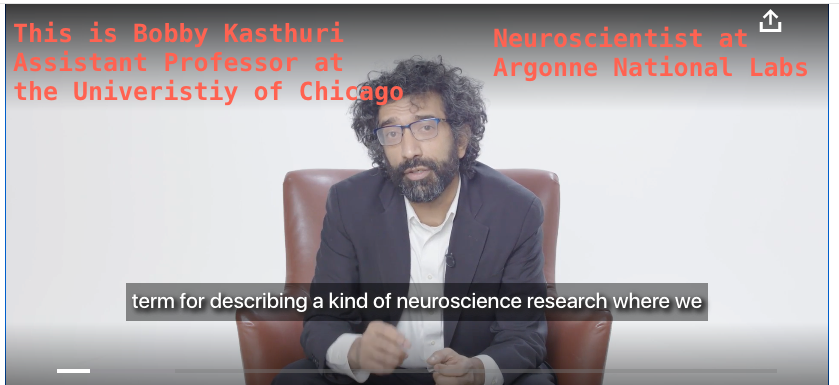


There are more cells in your brain than all of the stars we can see!
Do you find this interesting?
Psalm 147:3-4
3 He heals the brokenhearted and binds up their wounds. 4 He determines the number of the stars and calls them each by name.
Matthew 10:30
30 But the very hairs of your head are all numbered.
So how do the cells in your brain talk to the other cells in your brain?
Basically the communication from one part of the brain to another part of the brain through the wires [dendrites that connect them].
What if those dendrites were More than just wiring?
From 2013
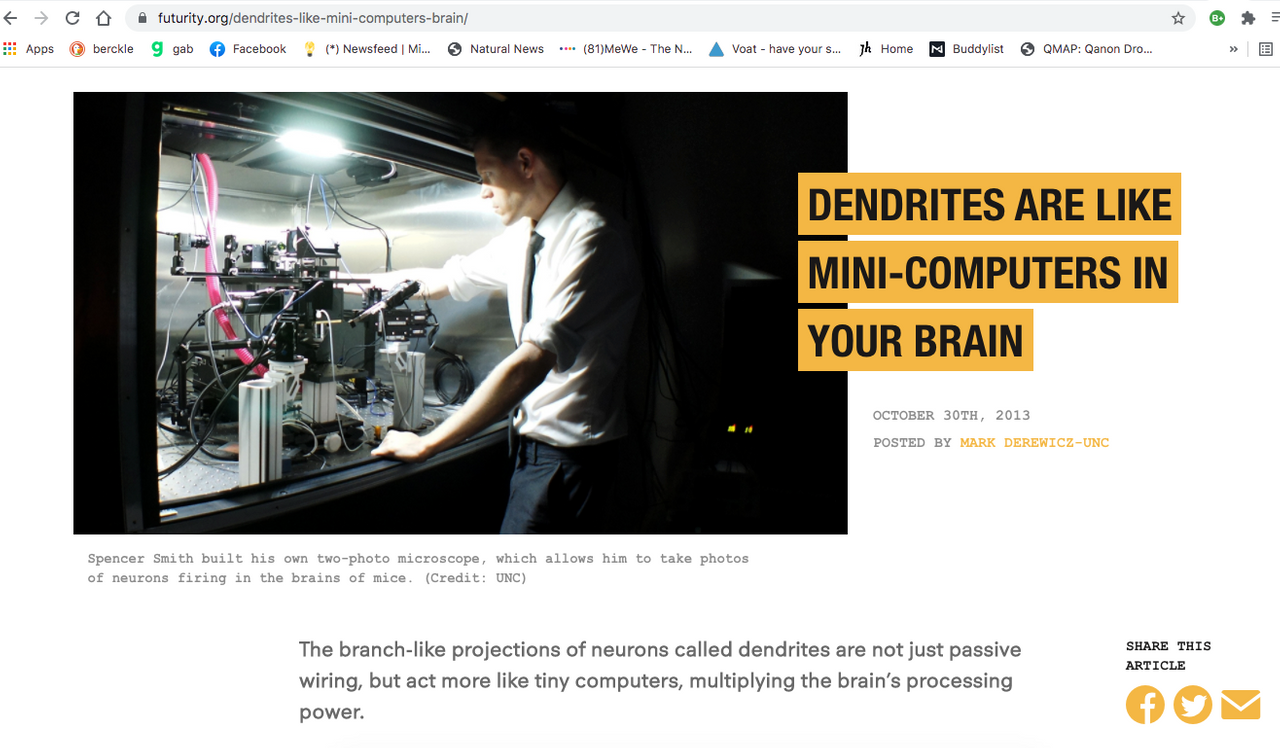
“Suddenly, it’s as if the processing power of the brain is much greater than we had originally thought,” says Spencer Smith, an assistant professor in the University of North Carolina at Chapel Hill’s School of Medicine.
His team’s findings, published in the journal Nature, could change the way scientists think about long-standing scientific models of how neural circuitry functions in the brain, while also helping researchers better understand neurological disorders.
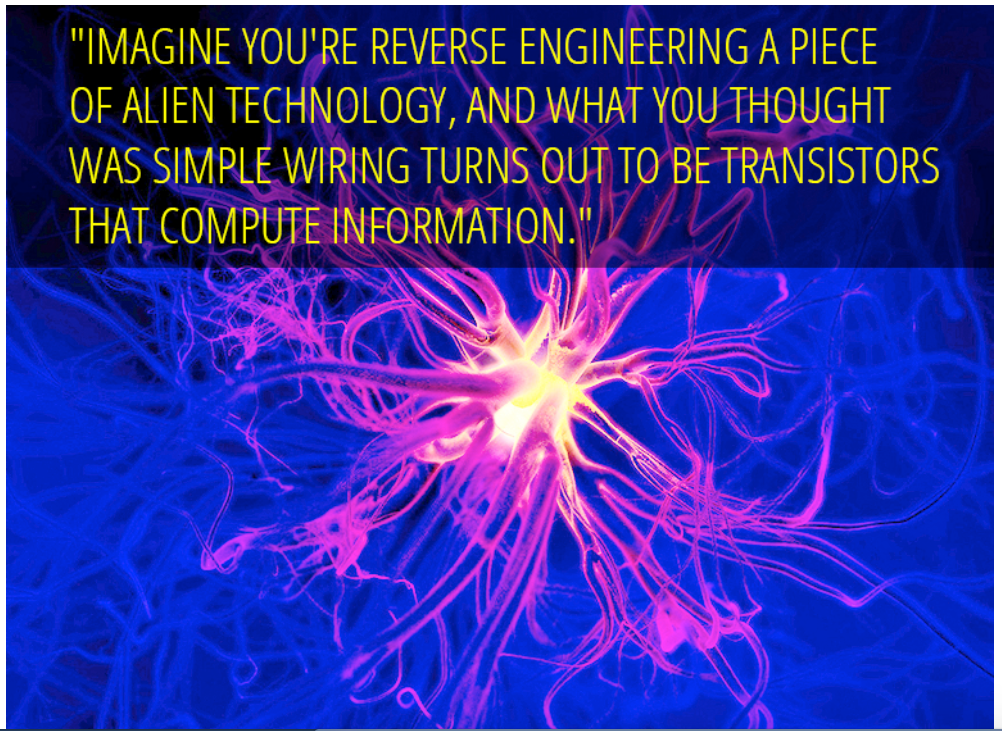
Axons are where neurons conventionally generate electrical spikes, but many of the same molecules that support axonal spikes are also present in the dendrites.
Previous research using dissected brain tissue had demonstrated that dendrites can use those molecules to generate electrical spikes themselves, but it was unclear whether normal brain activity involved those dendritic spikes. For example, could dendritic spikes be involved in how we see?
The answer, Smith’s team found, is yes. Dendrites effectively act as mini-neural computers, actively processing neuronal input signals themselves.
[related]
Directly demonstrating this required a series of intricate experiments that took years and spanned two continents, beginning in senior author Michael Hausser’s lab at University College London, and being completed after Smith and Ikuko Smith set up their own lab at the University of North Carolina.
They used patch-clamp electrophysiology to attach a microscopic glass pipette electrode, filled with a physiological solution, to a neuronal dendrite in the brain of a mouse. The idea was to directly “listen” in on the electrical signaling process.
“Attaching the pipette to a dendrite is tremendously technically challenging,” Smith says. “You can’t approach the dendrite from any direction. And you can’t see the dendrite. So you have to do this blind.
“It’s like fishing if all you can see is the electrical trace of a fish.” And you can’t use bait. “You just go for it and see if you can hit a dendrite,” he adds. “Most of the time you can’t.”
But Smith built his own two-photon microscope system to make things easier.
“All the data pointed to the same conclusion,” Smith says. “The dendrites are not passive integrators of sensory-driven input; they seem to be a computational unit as well.”
https://www.futurity.org/dendrites-like-mini-computers-brain/
From the Wired article done on 10.25.2017
Because of the particular peskiness of studying the human brain, most brain maps are built from mice or post-mortem human tissue. Dead brain cells can tell you a lot about shape; you can stain ‘em and characterize their morphology. But they can’t tell you anything about the function of circuits—because they don’t fire.
So to keep the post-op cells alive and kicking, doctors pack the pea-sized tissue on ice. They need to keep the brain bit as close to freezing as possible—about 4 degrees centigrade—to slow down metabolism and prevent the tissue from deteriorating. Once it arrives at the Allen Institute, researchers slice the sample into many dozens of sections no thinner than a silicon wafer. Each slice is loaded into special containers Allen scientists developed to keep the tissue on life support. They look kind of like little baskets, floating around a tiny pump that bubbles in a life-sustaining stream of oxygen.
That’s enough time for people like Jonathan Ting, an assistant investigator at the Allen, to isolate individual neurons and push and prod them with glass electrodes. By forming a super-tight connection with the cell—what’s called a giga-ohm seal—he can measure how it spikes in response to little shocks of energy. Each pattern of spikes acts as a signature that helps identify the function of a neuron—maybe this one forms a thought, while that one feels a feeling.
“For 150 years neuroscientists have classified cells by the way they looked,” says Ting. But, he says, like describing a person, how much can you really know about someone just by looking at them? What about how they talk? How they act? What about their social network? All these different things paint a clearer picture of who a person is. “It’s the same in neuroscience,” says Ting. “We’re just starting to align morphology with electrical behavior with genetic expression.”
In addition to the recordings and 3-D renderings released today, the Allen Institute’s database now also contains gene expression profiles for nearly 16,000 individual neurons. This emerging field, known as single cell transcriptomics, lets scientists see all the genes that turn on in different kinds of brain cells. And on Monday, the National Institutes of Health awarded the Allen Institute and its collaborators $100 million to continue classifying human brain cells based on their shape, physiology, connective properties, and gene expression.
https://www.wired.com/story/live-neurons-help-scientists-build-better-maps-of-the-brain/
More info on Placebos
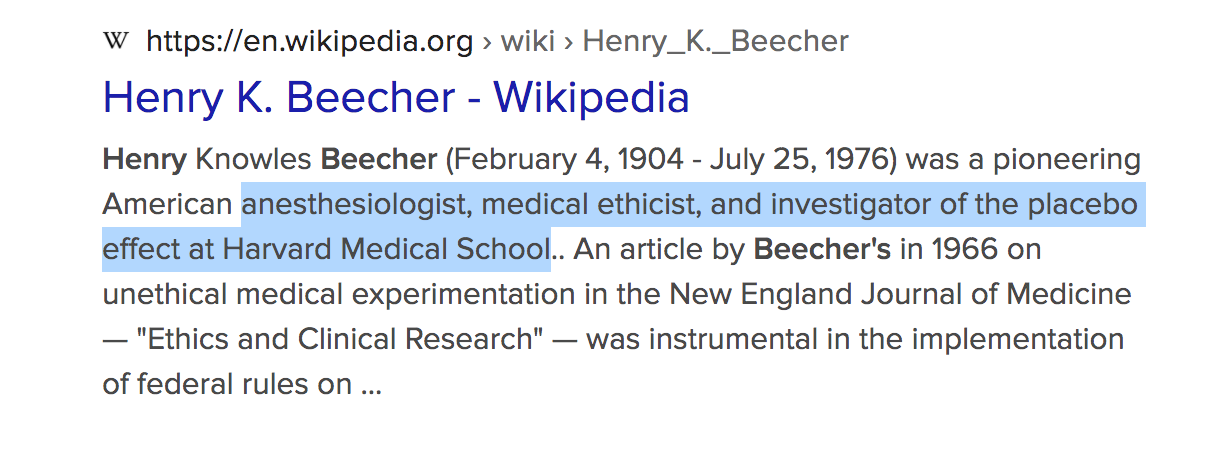
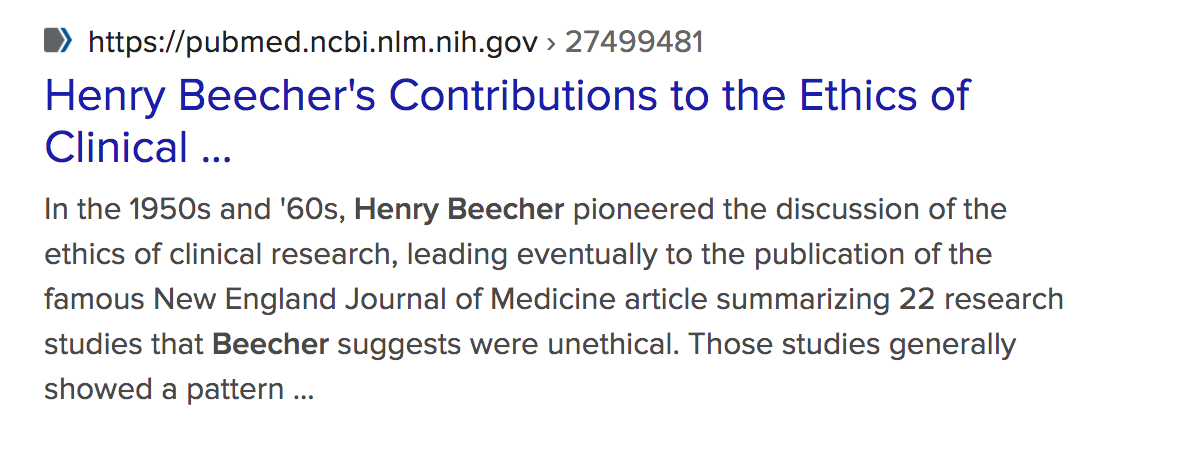
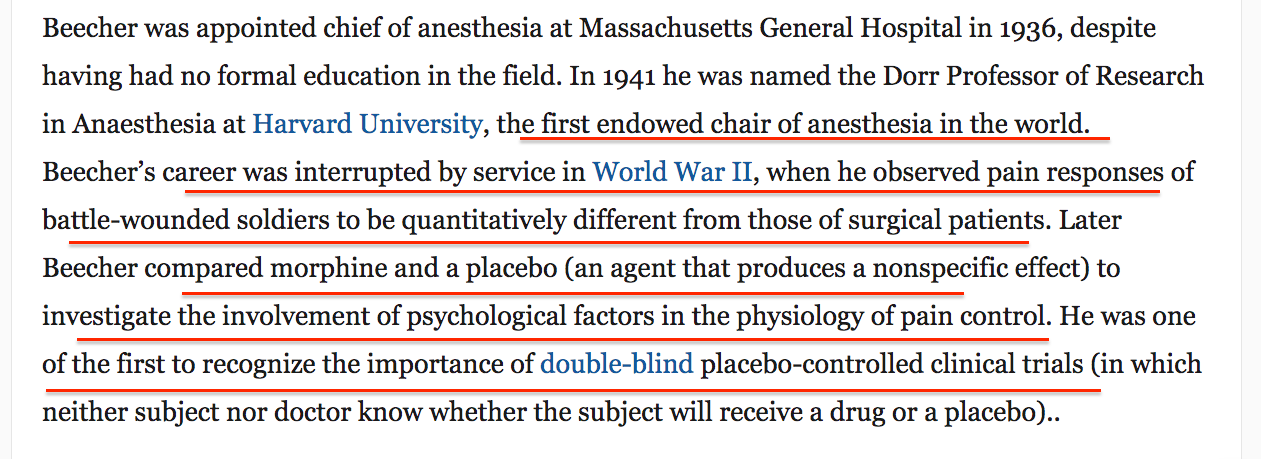
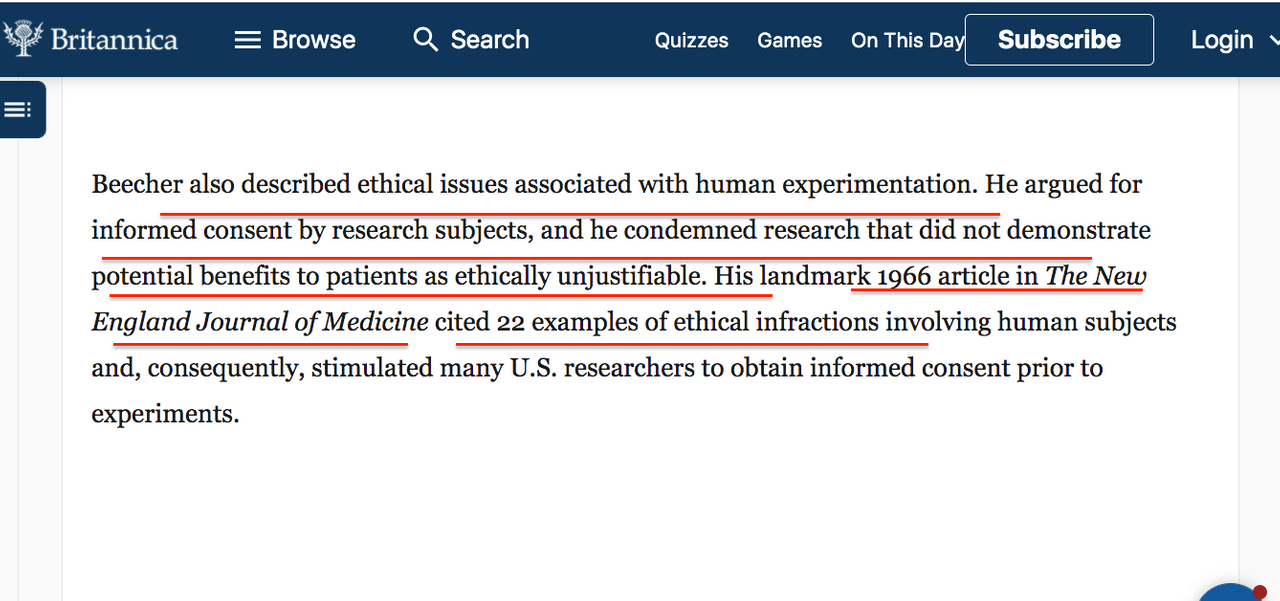
Whats horrifying is in modern day This still goes on,


Even if you don't like Republicans, I for one, would like to be rid of the two party system, but no matter which side calls for this, don't you think the Question should be answered rather than avoided and deflected?
According to The Hill from 10.22.2021
House members, most of whom are Republicans, want Fauci to explain himself in response to allegations brought on by the White Coat Waste Project that involve drugging puppies.
According to the White Coat Waste Project, the Food and Drug Administration does not require drugs to be tested on dogs, so the group is asking why the need for such testing.
White Coat Waste claims that 44 beagle puppies were used in a Tunisia, North Africa, laboratory, and some of the dogs had their vocal cords removed, allegedly so scientists could work without incessant barking.
Leading the effort is Rep. Nancy Mace (R-S.C.), writing a letter to the National Institutes of Health (NIH) saying the cordectomies are “cruel” and a “reprehensible misuse of taxpayer funds.”
"Our investigators show that Fauci’s NIH division shipped part of a $375,800 grant to a lab in Tunisia to drug beagles and lock their heads in mesh cages filled with hungry sand flies so that the insects could eat them alive," White Coat Waste told Changing America. "They also locked beagles alone in cages in the desert overnight for nine consecutive nights to use them as bait to attract infectious sand flies."
Instead of humanity, citizens of America allowing political party to divide, shouldn't we all be unified in demanding an Answer no matter which side of the fence or whom is requesting information and accountability?
These Are helpless animas we are talking about that are being victimized!
Unlike all of the Dem friends and former family I know, I fully support All of these politicians in the asking of these pertinent questions no matter the letter that follows their name.
I choose to Not be played, and I choose to give credit where it is due, even though I do not see that from those who are tied to political party over decency and protection of victims.
Mace’s letter was signed by Reps. Cindy Axne (D-Iowa), Cliff Bentz (R-Ore.), Steve Cohen (D-Tenn.), Rick Crawford (R-Ark.), Brian Fitzpatrick (R-Pa.), Scott Franklin (R-Fla.), Andrew Garbarino (R-N.Y.), Carlos Gimenez (R-Fla.), Jimmy Gomez (D-Calif.), Josh Gottheimer (D-N.J.), Fred Keller (R-Pa.), Ted Lieu (D-Calif.), Lisa McClain (R-Mich.), Nicole Malliotakis (R-N.Y.), Brian Mast (R-Fla.), Scott Perry (R-Pa.), Bill Posey (R-Fla.), Mike Quigley (D-Ill.), Lucille Roybal-Allard (D-Calif.), Maria E. Salazar (R-Fla.), Terri Sewell (D-Ala.), Daniel Webster (R-Fla.) and Del. Eleanor Holmes Norton (D-D.C.)
The National Institute of Allergy and Infectious Diseases did not immediately respond to a request for comment from Changing America.



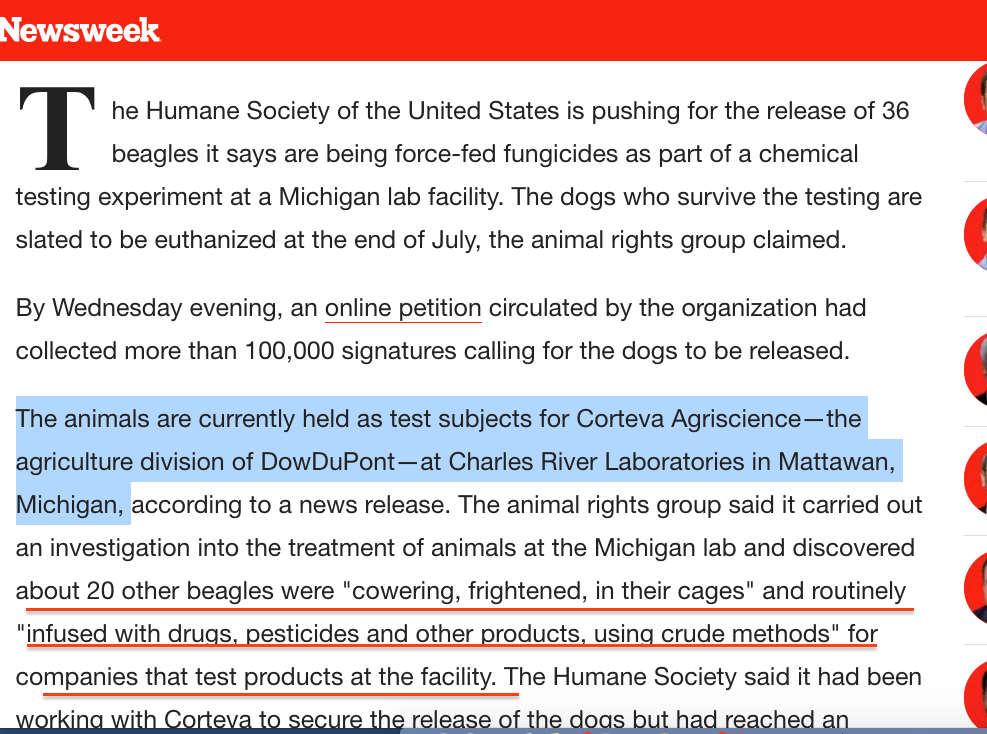
According to Newsweek in an article from 3.13.2019
The Humane Society of the United States is pushing for the release of 36 beagles it says are being force-fed fungicides as part of a chemical testing experiment at a Michigan lab facility. The dogs who survive the testing are slated to be euthanized at the end of July, the animal rights group claimed.
By Wednesday evening, an online petition circulated by the organization had collected more than 100,000 signatures calling for the dogs to be released.
The animals are currently held as test subjects for Corteva Agriscience—the agriculture division of DowDuPont—at Charles River Laboratories in Mattawan, Michigan, according to a news release. The animal rights group said it carried out an investigation into the treatment of animals at the Michigan lab and discovered about 20 other beagles were "cowering, frightened, in their cages" and routinely "infused with drugs, pesticides and other products, using crude methods" for companies that test products at the facility. The Humane Society said it had been working with Corteva to secure the release of the dogs but had reached an "impasse" in negotiations.
"For months, we have been urging Dow to end the unnecessary test and release the dogs to us," Kitty Block, president of Humane Society International, said in a statement. "We have gone to considerable lengths to assist the company in doing so, but we simply cannot wait any longer; every single day these caged dogs are being poisoned and are one day closer to being killed. We must turn to the public to join us in urging Dow to stop the test immediately and to work with us to get these dogs into suitable homes."
Also on Tuesday, the animal rights group released a graphic video detailing past experiments at the Michigan lab facility and claimed the beagles would undergo the same treatment in the coming year. The video shows some beagles bearing surgical scars locked in cages, while others are force-fed an unknown liquid through what appears to be a syringe.
In a statement, Corteva said it only tested products on animals when required by regulatory authorities. In this case, Corteva argued that Brazil's Agência Nacional de Vigilância Sanitária (ANVISA) mandated the testing.
The vast majority of animal testing is conducted on rodents, although some 60,000 dogs are still tested on each year, according to The Humane Society. The top nine countries for animal testing are, in order, the USA, Japan, China, Australia, France, Canada, the UK, Germany and Brazil, Cruelty Free International stated in a fact sheet.
In a position statement, Americans For Medical Progress—an advocacy organization that supports "ethical, judicious and responsible" testing on animals—stated that some testing is critical to scientific advancement.
"Animal studies continue to play a crucial part in medical, veterinary and scientific research that benefits both animals and humans," the organization stated. "Americans for Medical Progress supports research involving animals when it is necessary to advance our understanding of biological processes."
Personally, I think it's Disgusting as God gave us guardianship and these people and those who support them are taking advantage of defenseless, helpless animals in the name of science.
That is Not the kind of progress I wish to be a part of.
We don't need Big Pharma's professed veiled "cures" which really only create reoccurring customers along with a host of new symptoms which just happen to require More Big Pharma. Interesting Coincidence don't you think?
Facebook Frames thread on this here,
https://www.facebook.com/melissa.mcgarity.14/posts/10224747472568688
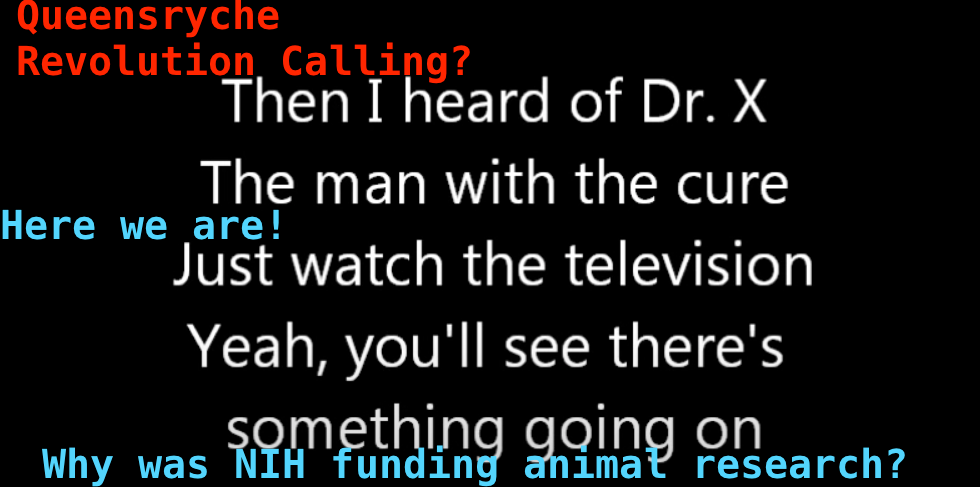
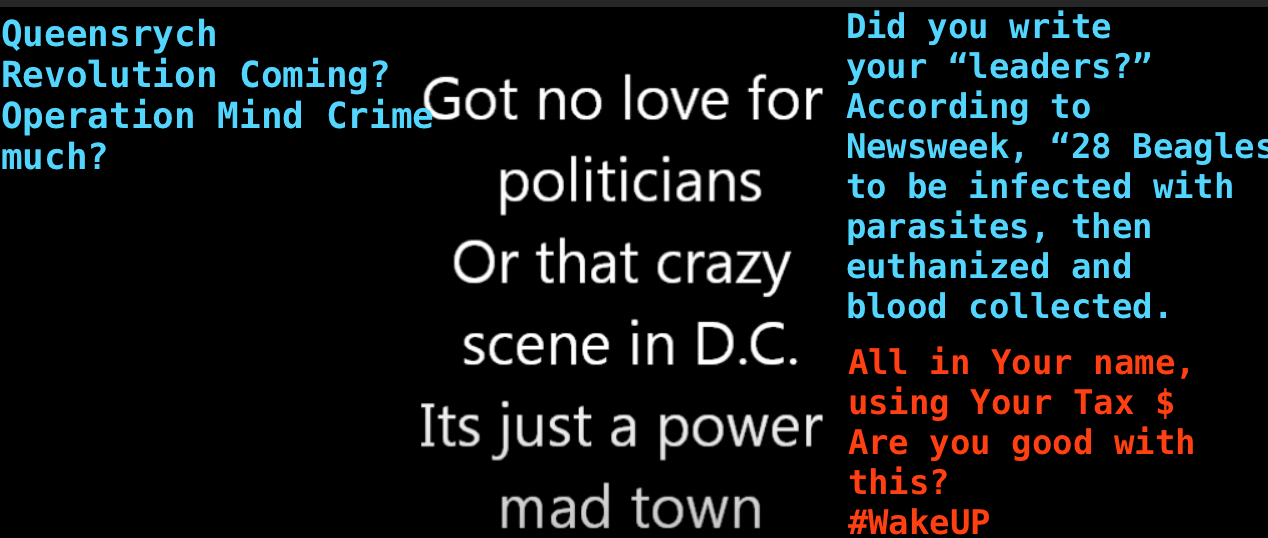
Revolution Calling - Queensryche Lyrics

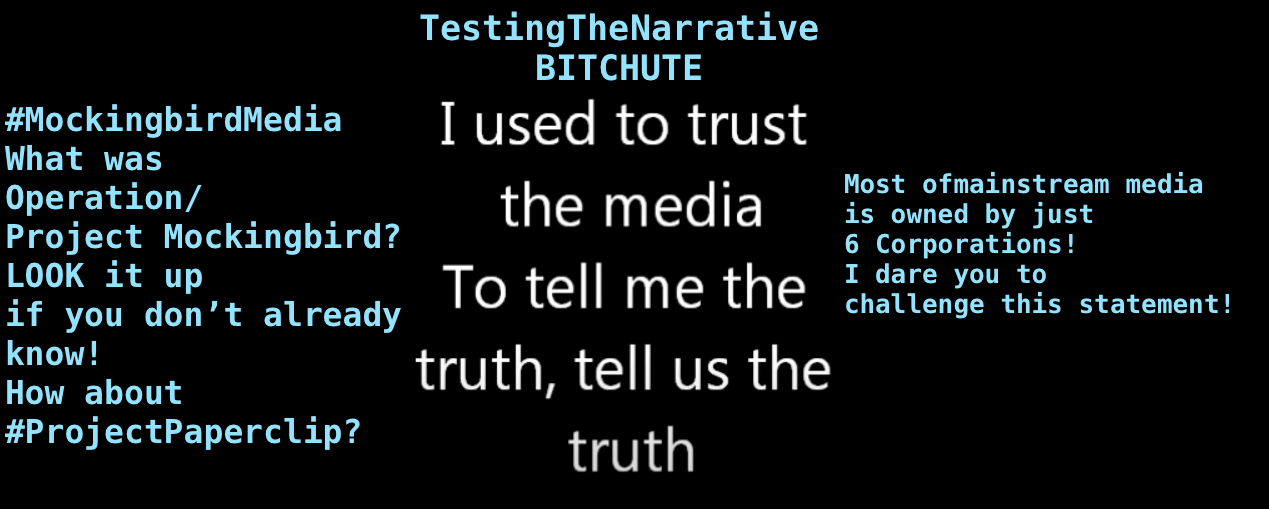
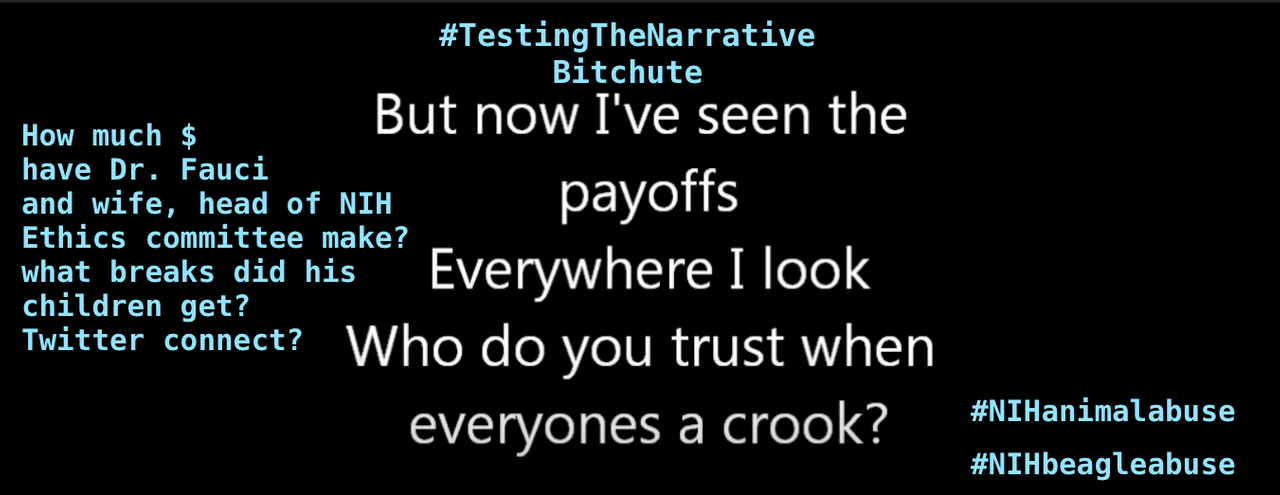
Looks like software engineer daughter of Fauci is having a hard time defending his behavior!
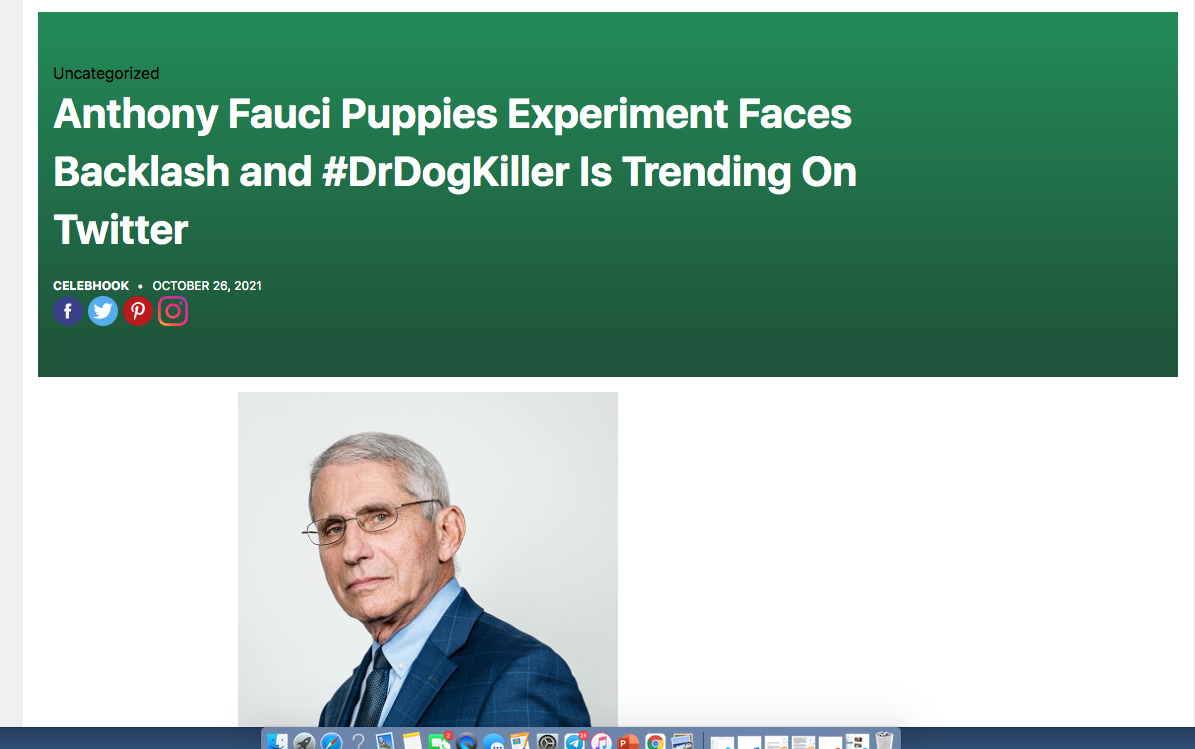
More Sources and Connecting Articles
https://www.nature.com/articles/nn.4290/
https://www.britannica.com/biography/Henry-Knowles-Beecher
https://www.vanityfair.com/news/2021/10/nih-admits-funding-risky-virus-research-in-wuhan
https://www.newsweek.com/anthony-fauci-bipartisan-nih-abuse-de-barked-beagle-puppies-1641904
https://www.huffpost.com/entry/lab-beagles-fungicides-dow-adoption_n_5c9e439fe4b0474c08cdbf38
